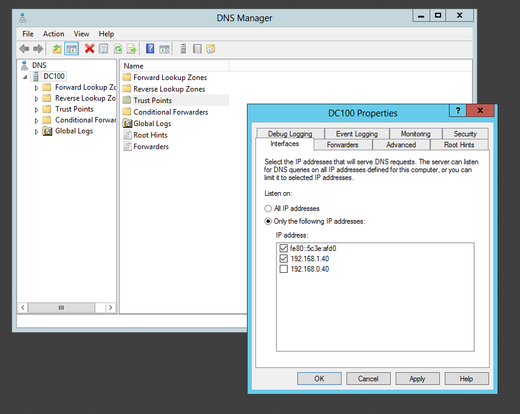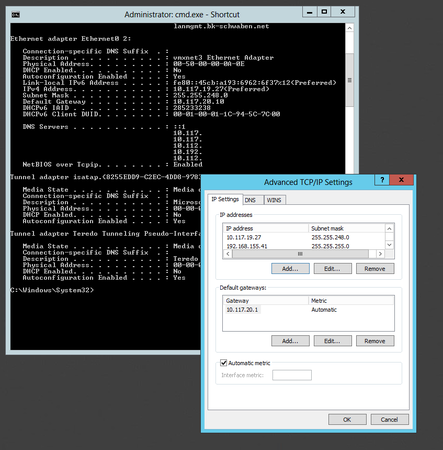Unlike simple work computers, server systems have at least two network cards, rather than four NICs. Likewise, many server computers have several IP addresses, which make them accessible from the network.
If a computer system has multiple network addresses, this is referred to as "multihoming". Interestingly, the industry uses this conceptuality for several variations:
- A redundant address with multiple interfaces
- A server with multiple addresses on several interfaces
- Multiple addresses on an interface
Redundant addresses require either built-in "network load balancing" or "bonding" services on the server or on a front-mounted router. This sounds more complicated than it really is in practice. The challenge in monitoring is to ensure that both (or even more) redundant paths are visible during monitoring. The simplest form is the multiple link check of the redundant paths while the availability of the address as a whole is monitoring the "service." If you want a more professional monitoring capacity, keep an eye on the throughput of the interfaces.
Multiple NICs and multiple addresses do not pose a particular challenge for monitoring as each path is easy to monitor on its own. Typically, there is a management NIC for administrative access, two duplicate interfaces for client / load access, and one or two NICs for the storage network.
For multiple network cards with different IP addresses, administrators should be careful with Windows DNS servers. In the basic setting, a Windows server responds to DNS queries on all available IP addresses. In storage networks, this server response to DNS queries is useless and requires even more power. This is particularly true in small environments where iSCSI storage networks only work with fixed IP addresses.
For this reason, it is advisable to disable all interfaces/IP addresses that are not desired in the "Interfaces" tab of the DNS server under Microsoft Windows. The administrator should think of these settings when a network card is subsequently installed - which is done with virtual servers using a simple mouse click. Often, the newly added IP address appears in the Properties window only after a restart of Windows.
Multiple IP addresses on an interface should not be a problem at all, not even when monitoring. Regarding the resolutions, these configurations are hopefully not the rule, but only a rare exception. Multiple assignments of IP addresses with resolutions to an interface make the error search immensely difficult in the event of a problem.
 Published by
Published by 






.jpg)






